
Snakes are often misunderstood creatures, but their beauty can be undeniable. Among them, some species stand out as nature’s living art, combining vibrant hues and unique patterns. These colorful snakes display the stunning variety that the natural world has to offer.
Brazilian Rainbow Boa
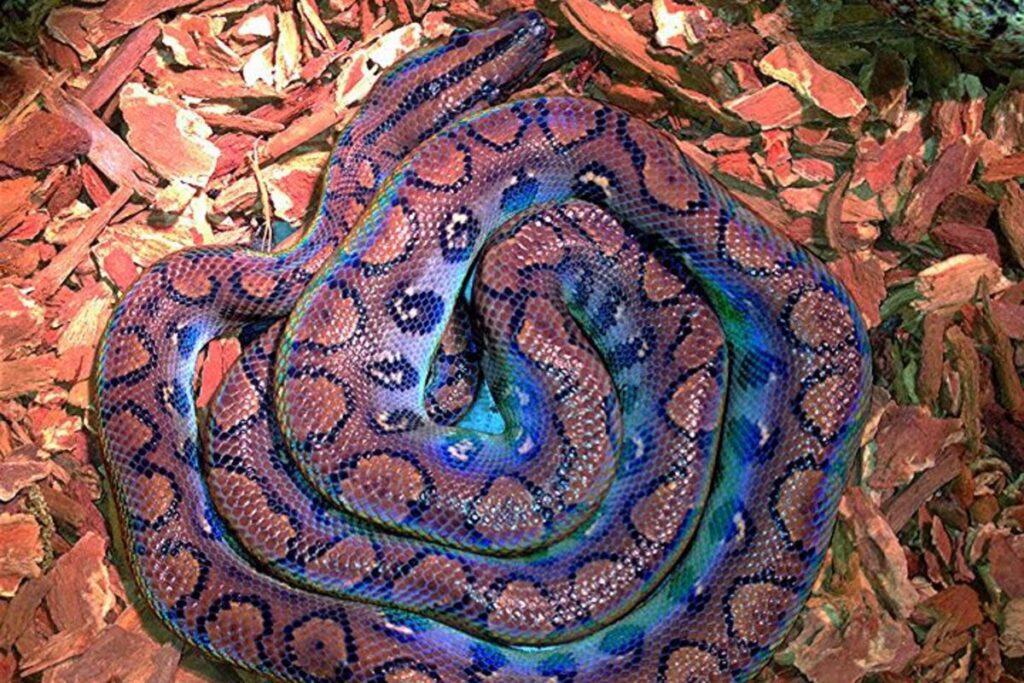
This Amazon Basin native mesmerizes with its iridescent scales that shimmer in the light. The Brazilian Rainbow Boa’s dazzling colors result from microscopic ridges on its scales that create a prism effect. Living in humid environments, this snake relies on its stealth and strength to hunt small mammals and birds.
Green Tree Python

Juvenile Green Tree Pythons begin life in yellow or red before transforming into vivid emerald green as adults. Found in New Guinea and Australia, these arboreal snakes blend seamlessly with foliage. Their heat-sensing pits help detect prey, including small mammals and birds, in the dark.
High Yellow Green Tree Python
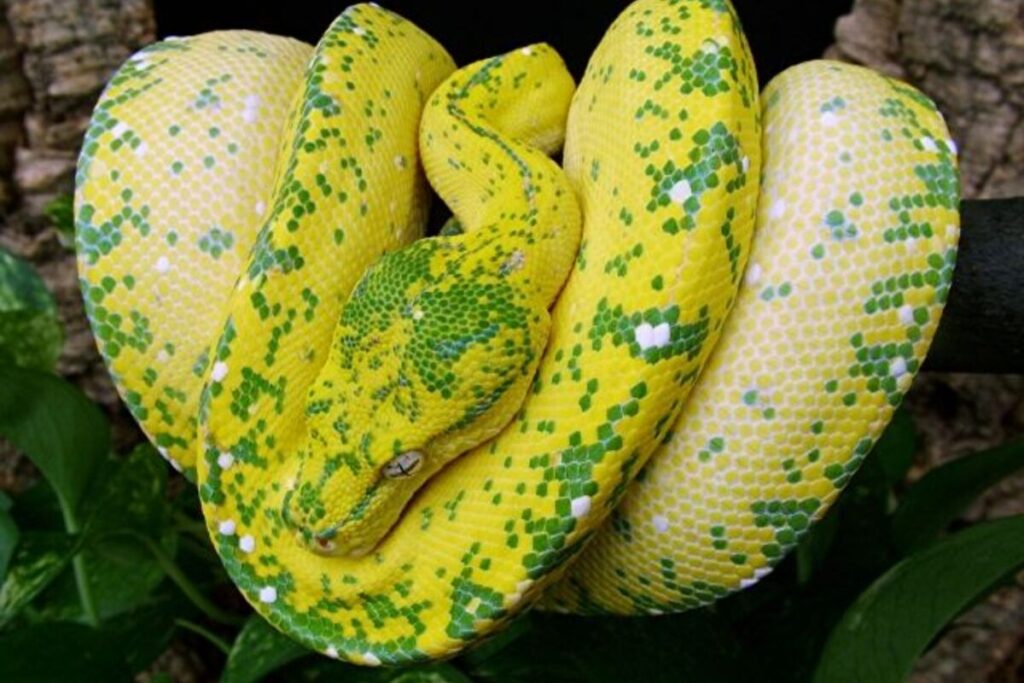
The High Yellow Tree Python is a large snake that grows from four to seven feet long. It is nonvenomous and eats small mammals and sometimes reptiles. They hunt by hanging from branches and striking from an S shape, then constricting the prey. It is an oviparous snake and one of the few snakes that stays with its eggs to incubate them. It is found mainly on the island of Kofiau in West Papua, Indonesia, though the aforementioned Green Tree Python, to which it is closely related, can be found throughout most of Indonesia, New Guinea, and parts of Queensland, Australia.
Red-bellied Black Snake
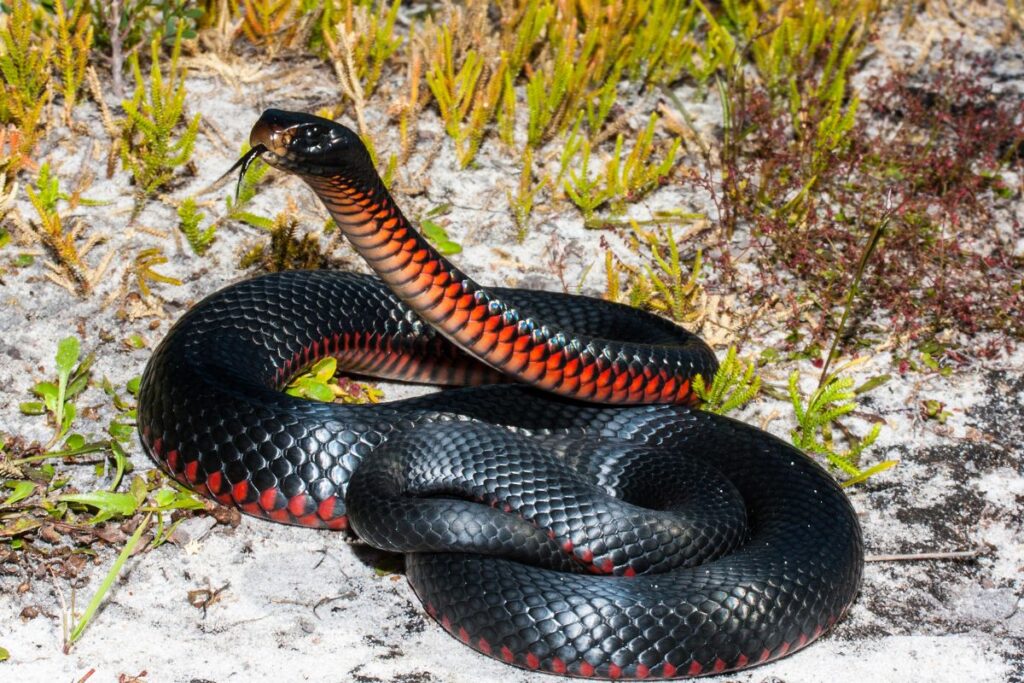
With its glossy black body and crimson-red underside, this Australian snake is both feared and admired. Semi-aquatic, it prefers habitats near water and hunts frogs and small mammals. Its striking coloration serves as a warning to predators and an attraction during mating season.
Western Green Mamba
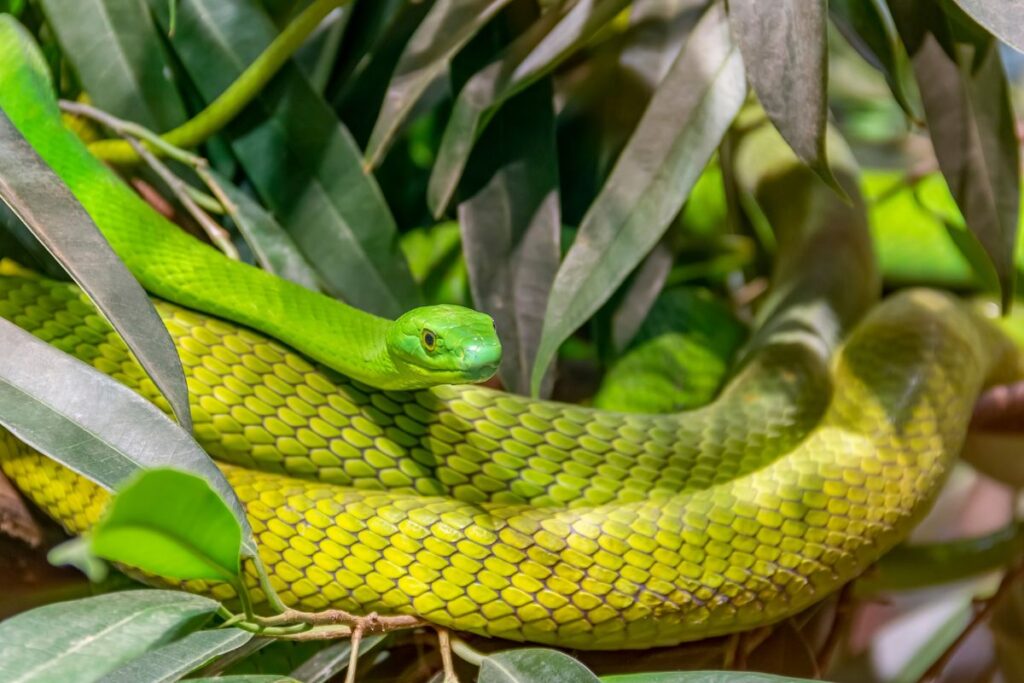
This venomous beauty from East Africa dazzles with its uniform green scales, blending perfectly into dense forest foliage. Unlike the aggressive Black Mamba, the Western Green Mamba is less confrontational but equally dangerous. Its prey includes birds and small mammals.
Topaz Tanami Woma Python

The Topaz Tanami Woma Python is a medium-sized python, reaching about 3½ feet in length. It was selectively bred in captivity from the Tanami Woma Python to enhance its vibrant coloration. Native to the Tanami Desert in Australia’s Northern Territory, these burrowing snakes create multi-chambered burrows. Their diet includes small mammals like rabbits, as well as lizards and other reptiles.
Emerald Tree Boa

The Emerald Tree Boa is a striking snake native to South America, often found along the Amazon River. Averaging six feet in length but capable of reaching nine feet, these boas primarily consume small mammals, though they occasionally eat birds, lizards, and frogs. With a slow metabolism, they can go several months without food. Despite being unrelated, Emerald Tree Boas closely resemble the Green Tree Python, which is related to the High Yellow Green Tree Python.
Amazon Tree Boa
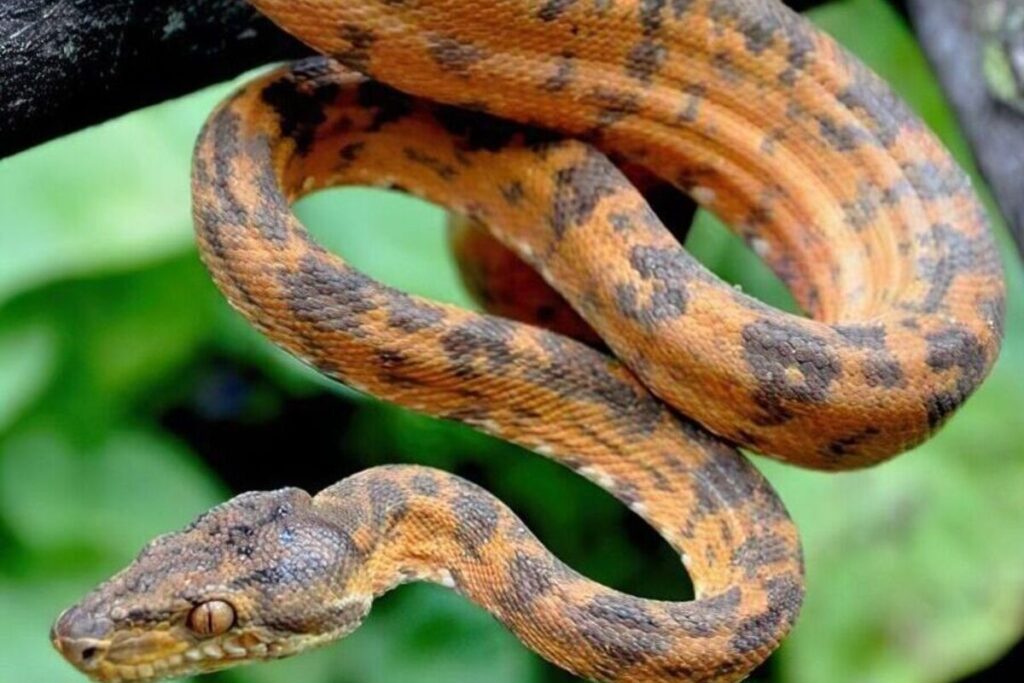
Amazon Tree Boas are fully arboreal snakes found throughout the northern half of South America. They thrive in humid tropical forests, especially near rivers, but can also be seen in dry forests and savannas. Spending most of their time among trees, their camouflage provides excellent concealment. Active during both day and night, these carnivorous snakes opportunistically hunt prey such as birds, frogs, lizards, rodents, marsupials, and bats.
Speckled Kingsnake

Nicknamed the “salt and pepper snake,” the Speckled Kingsnake’s black body is adorned with creamy yellow spots. Native to the central United States, it preys on venomous snakes like rattlesnakes, thanks to its immunity to their venom. Its unique pattern helps it blend into its environment.
Emerald Green Pit Viper

The Emerald Green Pit Viper is a recent discovery, first found in 2002 in Burma’s eastern Himalayan mountains. This venomous snake displays bright green coloration with distinctive markings: males have red eyes with red and white stripes, while females have yellow eyes and primarily white stripes. Reaching lengths of at least 4.5 feet, their actual maximum size remains unknown. As a newer addition to the reptile kingdom, much about this fascinating creature is still being studied.
African Bush Viper
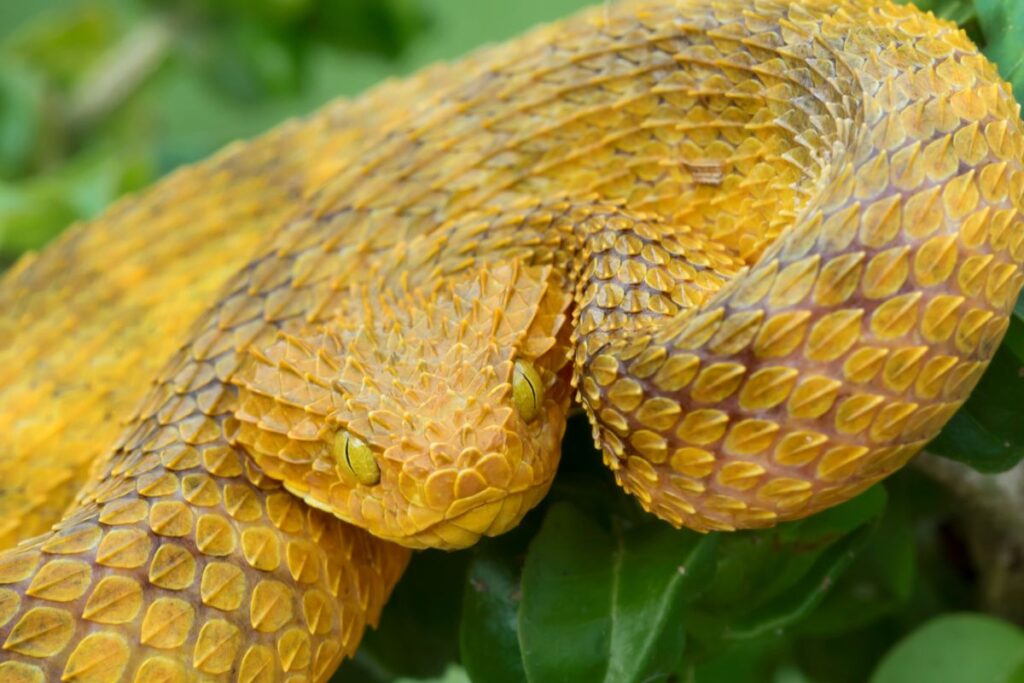
Known for its keeled scales and dramatic colors, the African Bush Viper ranges from green and yellow to fiery orange. This arboreal snake, found in African rainforests, hunts birds and small mammals. Its vivid coloration varies by region, showcasing nature’s adaptive evolution.
White-Lipped Island Pit Viper

The White-Lipped Island Pit Viper, also known as the white-lipped tree viper, is a venomous snake native to Southeast Asia. Recognized as one of the world’s most beautiful snakes, it comes in a variety of vibrant colors, including turquoise, lime green, and yellow. These pit vipers are carnivorous, feeding on nearby prey, and are typically found in wooded areas, often in trees. Their diet includes amphibians, insects, and birds. The unique coloration of the white-lipped pit viper adds to its allure, making it a striking addition to the snake family.
Corn Snake

The Corn Snake, a type of rat snake, is native to North America and is commonly found throughout the southeastern and central United States. These nonvenomous snakes use constriction to subdue their prey, primarily rodents. Corn snakes are often misidentified as the dangerous copperhead, which leads to unnecessary fear and harm. They are known for their striking color variations, including fluorescent hues, striped morphs, and even an “opal” variant with white and pink or blue streaks. Thanks to their docile nature, corn snakes are popular pets, ranking as the second most common pet snake in the world, just behind the ball python.
Stay connected with us for more stories like this! Follow us to get the latest updates or hit the Follow button at the top of this article, and let us know what you think by leaving your feedback below. We’d love to hear from you!







